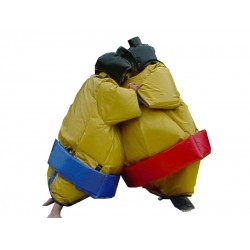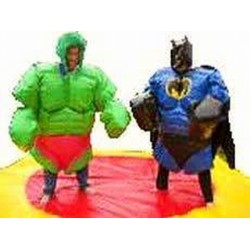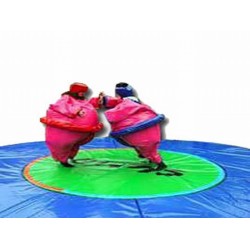What Should You Consider When Renting or Buying a Sumo Suit?

Whether you're planning a party, organizing a team-building event, or just looking to add some fun to your activities, a sumo suit can be a great addition. However, choosing the right sumo suit involves several considerations to ensure you get the best experience and value. Here’s what you should consider when renting or buying a sumo suit:
1. Purpose and Usage
Event Type: Consider the type of event where the suit will be used. For casual parties, a basic suit may suffice, but for more frequent or rigorous use, a higher-quality suit may be necessary.
Frequency of Use: Determine how often you’ll be using the suit. If it’s for a one-time event, renting might be more cost-effective. For regular use, purchasing could be a better option.
2. Suit Size and Fit
Size Options: Check the available sizes of the sumo suits. Ensure that the suit comes in various sizes to accommodate different body types and that it will fit comfortably for all participants.
Adjustability: Look for suits with adjustable straps or closures to ensure a good fit. Proper fit is crucial for comfort and safety during use.
3. Material and Quality
Durability: Evaluate the materials used in the suit. High-quality sumo suits are typically made from durable, tear-resistant materials like vinyl or nylon, which can withstand the rigors of play.
Padding and Inflation: Consider the padding inside the suit. It should be adequately padded to provide comfort and protection, and it should inflate properly to give a good sumo appearance.
4. Safety Features
Protection: Ensure the suit has adequate padding and safety features to protect participants from injuries. Check for additional protective gear options, such as helmets or knee pads, if needed.
Ventilation: Look for suits with good ventilation or breathable materials to keep participants comfortable and reduce overheating during extended use.
5. Rental vs. Purchase
Cost: Compare the cost of renting versus buying a sumo suit. Renting can be more affordable for a one-time event, while buying might be a better investment for frequent use.
Condition: If renting, ensure the suit is in good condition and clean. Check the rental company’s reputation and reviews for quality and reliability.
Customization: If buying, you might have the option to customize the suit with specific colors or designs. Look for sellers that offer customization options if you have particular preferences.
6. Maintenance and Care
Cleaning: Find out how to properly clean and maintain the suit. Regular maintenance is essential to keep the suit in good condition and extend its lifespan.
Storage: Ensure you have adequate storage space for the suit. It should be kept in a clean, dry place to prevent damage when not in use.
7. Safety and Legal Considerations
Insurance and Liability: If renting, check if the rental company provides insurance or liability coverage. For purchases, consider whether you need additional coverage for frequent use.
Compliance: Ensure the suit complies with any local safety regulations or standards, especially if used in public or organized events.
Conclusion
When renting or buying a sumo suit, careful consideration of these factors can help you make an informed decision that enhances your event and ensures a safe, enjoyable experience for all participants. Whether you’re hosting a one-time event or investing in a suit for regular use, choosing the right sumo suit involves balancing quality, fit, safety, and cost.



